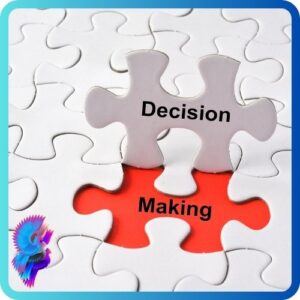Advertisements
Navigating the Path to Success
Introduction:
Strategy, a term derived from the Greek word “strategia” meaning generalship, is a fundamental concept that transcends various domains, from business and military to personal development.
It is a structured plan of action designed to achieve specific goals by making informed choices, allocating resources effectively, and adapting to changing circumstances.
This essay explores the multifaceted nature of strategy, its key elements and types, and the pivotal role it plays in shaping success.
I. Key Elements of Strategy:
1. Goal or Objective:
At the core of every strategy lies a clear and well-defined goal or objective.
Whether in business, military planning, or personal development, a strategy provides a roadmap for achieving a desired outcome.
2. Resource Allocation:
Effective strategies require the allocation of resources, including financial, human, and technological assets. Strategic resource allocation ensures that limited resources are optimized to support the plan’s execution.
3. Decision-Making:
Strategy involves making critical decisions about how to approach a given situation. This decision-making process includes analyzing available options, weighing potential risks and benefits, and choosing the most suitable path forward.
4. Adaptability:
Recognizing the dynamic nature of the environment, successful strategies incorporate an element of adaptability.
An ability to adjust the plan based on changing circumstances, unforeseen challenges, or new information enhances the strategy’s long-term viability.
5. Competitive Advantage:
In competitive contexts, such as business or military operations, strategies often aim to establish a competitive advantage.
Whether through cost leadership, differentiation, innovation, or other means, gaining an edge over rivals is a central consideration.
6. Risk Management:
Strategies include a comprehensive approach to risk management. Identifying potential risks and developing measures to mitigate or manage them is crucial for enhancing the likelihood of achieving the desired outcome.
II. Types of Strategy:
1.Business Strategy:
In the business realm, strategies are formulated to achieve organizational objectives.
This may involve decisions about market positioning, product development, pricing, and competitive tactics, among other factors.
2.Corporate Strategy:
Corporate strategy addresses the overall scope and direction of an entire organization.
It involves decisions about diversification, mergers and acquisitions, and the allocation of resources across various business units.
3.Military Strategy:
In a military context, strategy encompasses planning and executing operations to achieve military objectives.
This includes considerations of tactics, logistics, and the overall conduct of campaigns.
4.Marketing Strategy:
Marketing strategy focuses on promoting and selling products or services.
Decisions about target markets, promotional activities, pricing, and distribution channels are central to this type of strategy.
5.Digital Strategy:
With the rise of technology, digital strategy leverages digital tools and platforms to achieve business goals.
This may include online marketing, e-commerce initiatives, and digital transformation strategies.
6.Personal Development Strategy:
On an individual level, people often create strategies to achieve their life goals. This might involve education, career planning, financial management, and personal growth.
III. The Importance of Strategy:
1. Guiding Decision-Making:
Strategy provides a framework for decision-making, helping individuals and organizations make informed choices aligned with their goals.
2.Optimizing Resource Utilization:
Strategic resource allocation ensures that limited resources are utilized efficiently, contributing to improved productivity and effectiveness.
3.Adaptation to Change:
An adaptable strategy allows for responsiveness to changing circumstances, ensuring relevance and effectiveness in dynamic environments.
4. Creating Sustainable Competitive Advantage:
Businesses that formulate and execute effective strategies are more likely to establish and sustain a competitive advantage, positioning themselves for long-term success.
5. Risk Mitigation:
Strategic planning includes risk management measures, reducing the impact of unforeseen challenges, and enhancing an entity’s ability to navigate uncertainties.
Conclusion: In conclusion, strategy is a dynamic and versatile concept that underpins success across various domains.
From the intricacies of business planning to the complexities of military campaigns and the personal pursuits of individuals, strategy provides a roadmap for achieving objectives. Its key elements, including goal-setting, resource allocation, decision-making, adaptability, and risk management, contribute to its effectiveness. Recognizing the importance of strategy and mastering its application is paramount for those seeking to navigate the path to success in an ever-evolving world.
Advertisements

























